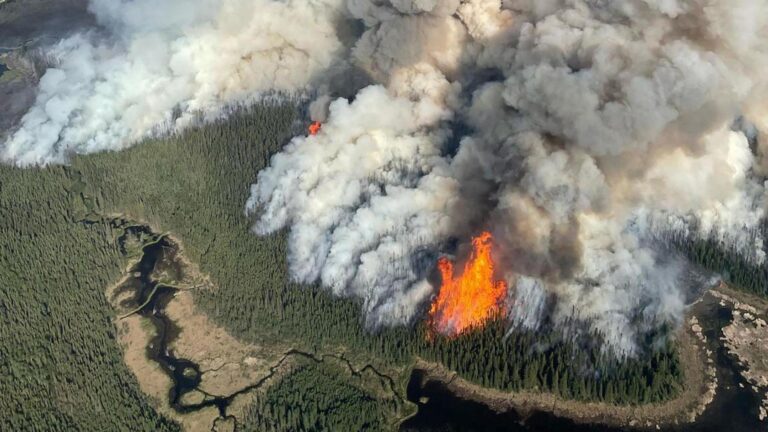After weeks of relentless wildfires scorching large swaths of Canada, recent developments bring cautious relief to the northern United States as smoke begins to dissipate. While the worst of the blazes appear to be contained, experts warn that intermittent flare-ups and lingering threats may still pose challenges in affected regions. This article examines the current status of Canadian wildfires, their impact on air quality and public health across the northern US, and what residents can expect in the coming days.
Current Status of Canadian Wildfires and Their Impact on Northern US Air Quality
After weeks of intense wildfire activity across Canada’s western provinces, recent reports indicate a notable decline in active fire zones. Firefighting efforts combined with shifting weather patterns have contributed to better containment of several large blazes, particularly in British Columbia and Alberta. Although many fires are now under control, pockets of smoldering areas persist, maintaining a level of vigilance among authorities. Officials continue to monitor these hotspots, as dry conditions and gusty winds keep the possibility of flare-ups alive in some regions.
For the northern United States, especially states like Vermont, New Hampshire, and parts of upstate New York, the weakening smoke plumes have led to marked improvements in air quality over the past week. Air quality indexes (AQI) have moved from unhealthy to moderate or even good in several monitoring stations, allowing residents to breathe easier and outdoor activities to resume safely. However, sporadic shifts in wind direction could still transport smoke across the border intermittently, reminding communities to stay alert. Key factors influencing the situation include:
- Recent precipitation helping to suppress fires
- Decreases in daily fire intensity ratings
- Changing atmospheric conditions impacting smoke dispersion
| Region | Current AQI Level | Primary Pollutants | ||||||||||||||||||||||||
|---|---|---|---|---|---|---|---|---|---|---|---|---|---|---|---|---|---|---|---|---|---|---|---|---|---|---|
| Burlington, VT | Moderate (55) | PM2.5, Ozone | ||||||||||||||||||||||||
| Montpelier, VT | Good (40) | Ongoing Risks and Potential Hotspots for Wildfire Activity in the Region
While recent Canadian wildfires have largely diminished, certain areas remain vulnerable to flare-ups due to persistent dry conditions and unpredictable weather patterns. Authorities continue to monitor northern Ontario and parts of Quebec, where pockets of high temperatures combined with low humidity create ideal conditions for new fire ignitions. These zones, often remote and heavily forested, pose ongoing challenges to fire crews, who remain on alert for any sudden changes that could escalate wildfire activity. Experts point to a few key factors that increase the risk in these potential hotspots:
Safety Measures and Recommendations for Residents Amid Lingering Smoke and Fire ThreatsResidents are urged to remain vigilant despite the visible reduction in smoke and fire activity. Air quality may still fluctuate, particularly during changes in wind direction or unexpected flare-ups. It is crucial to limit outdoor activities, especially for vulnerable groups such as children, the elderly, and those with respiratory conditions. Keeping windows and doors closed, using air purifiers, and avoiding strenuous exercise outdoors can significantly reduce exposure to lingering smoke particles. Preparedness remains key as fire threats, while diminished, have not entirely disappeared. Local authorities recommend having an emergency kit ready, including masks rated for smoke filtration (such as N95), flashlights, and important documents. Homeowners should also review evacuation routes and keep communication devices charged. Below is a quick checklist to stay safe during this unpredictable period:
To Wrap It UpAs Canadian wildfires gradually come under control, the Northern U.S. is experiencing clearer skies and improved air quality. However, experts caution that occasional flare-ups and shifting winds may still pose intermittent risks in the coming weeks. Authorities continue to monitor conditions closely, urging residents to stay informed and prepared as the wildfire season progresses. |




